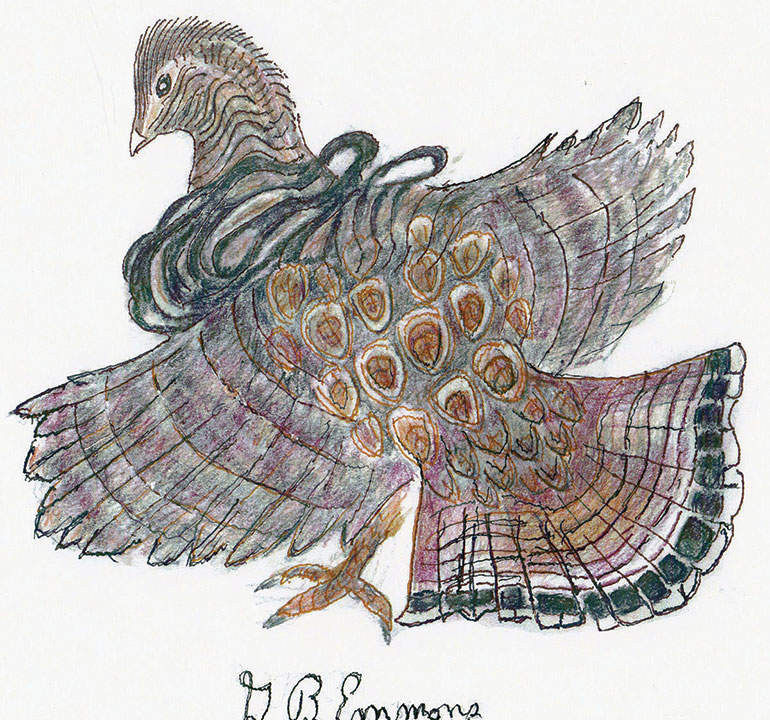Our own woodland Ruffed Grouse that drums in the spring is actually the very same bird as the celebrated Partridge in a pear tree of the Christmas carol. The Grouse gets its descriptive plumage title from the ruffed ring of dark feathers that rise up around its neck, lifted up by the air thrust of furtive wing beat drumming, as illustrated. It is a seasonal symphony to attract a receptive partner for reproduction, to be heard for up to a half a mile, once it is identified. It starts out slowly quiet at first, and then speeds up like the sound of starting a two-cycle engine. The drummer often mounts straight up on a low podium of a resonant hollow log, with its decorative tail proudly splayed out for effect. Then it cups its wings forward to trap the tattoo against its breast for loudest audible detonation.
The Ruffed Grouse is classified in the Phasianidae family of birds, like the cock Pheasant at the edge of a farmland hedgerow to romantically beat wings and crow like a barnyard rooster at dawn, to attract a hen for reproduction. A distant western cousin is the greater Sage Grouse. Its mating display is to strut and rapidly inflate and deflate sacs in its breast, producing loud bubbling sounds, while displaying its tail, and raising ruff on its breast. It is the same historic ritual ceremony as written by Chaucer about his Chanticleer mythical rooster in his classic work The Canterbury Tales.
The Ruffed Grouse as a ground-nesting bird is also very much an earth-bound species hatching out of an egg completely camouflaged in color and design for its new habitat. It is also capable of morphing its plumage to match the shades on northern grey conifers, or tones of southern rust brick-colored feathers. It spends most of its life within a short distance of its original birth and annually survives by timely adjusting to seasonal variations and requirements. Each performance for the circle-of-life ending winter is also justification for the spring renewal ritual here.
By George B. Emmons
